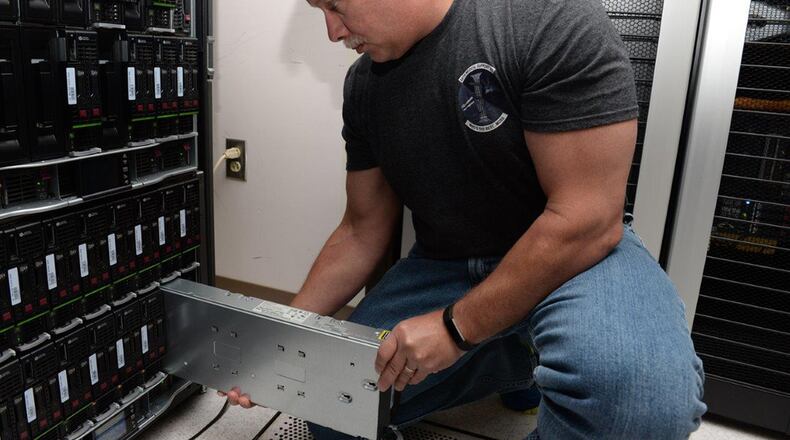The flight’s responsibilities include maintaining the hospital’s network and servers, ensuring each of the 2,500 computers are secure from network vulnerabilities, and managing all IT acquisitions.
One of the new systems they are looking to implement is the Radio Frequency Identification system. According to RFID Journal, a RFID tag or sticker [microchip] is attached on the equipment, which wirelessly transmits an identifier, such as a serial number, of an object by using radio waves. This system can be used to track all IT equipment throughout the hospital and can prevent unauthorized removal of equipment. If anything with an RFID sticker gets moved from its original position, the Systems flight will know.
Also in the works is a system called Vocera Platform that will replace the use of pagers. Vocera is a voice calling and secure texting system that enables quick access to obtaining and clarifying orders, changing patient status, and viewing critical test results, according to Vocera.com. Features also include clinical alarms and alerts.
Q-Flow, a queuing system, will replace the current prescription distribution process in the pharmacy. Navy.mil reported that other military hospitals have implemented the system and were able to improve wait times, better deal with prescription level issues and effectively monitor the need to increase staff members.
Soon the flight will operate under the Medical Community of Interest. Med COI is a joint services enterprise that provides access to Department of Defense and Department of Veterans Affairs users, according to the Defense Information Systems Agency. Currently, the Information Systems Flight runs on an Air Force network.
“Since we are in the planning stages to move to Med COI, we have to see if these new systems will transfer over,” said Christopher Mattox, chief of Systems Operations for the 88th MDSS Information Systems Flight.
The flight consists of three sections: Systems Operations includes Systems Administration, Security and Network Management; Plans and Programs manages equipment inventory and finances; and Computer Systems technicians maintain all workstations in the facility.
“We manage all the communications function for the hospital,” said Mattox. “The 88th Communications Group is our main oversite installation-wise, but our funding comes from the Defense Health Agency and we receive direction from the Air Force Medical Operations Agency.”
Among implementing new technologies, the Systems flight continues to maintain programs for certain clinics such as the FUJI CV (Cardiology), FUJI Epiphany (EKG), FUJI Synapse (Radiology), Essentris (Impatient Systems) and S3, a surgery scheduling system. They also manage their own SharePoint site that is separate from the base network.
For Mattox’s section, first thing each morning his technicians check on systems to make sure everything is functioning properly. The rest of the day consists of working trouble tickets and security patching computers.
“Obviously, technology has drastically evolved in the past couple or so decades,” said Mattox. “I originally came here in 1990, back then we were using a WANG VS100 [system introduced in 1979] mainframe as the scheduling system on the Ops floor. It was an internal system, its program was written using COBOL. We didn’t have a network, we used broadband and dumb terminals.”
About the Author
